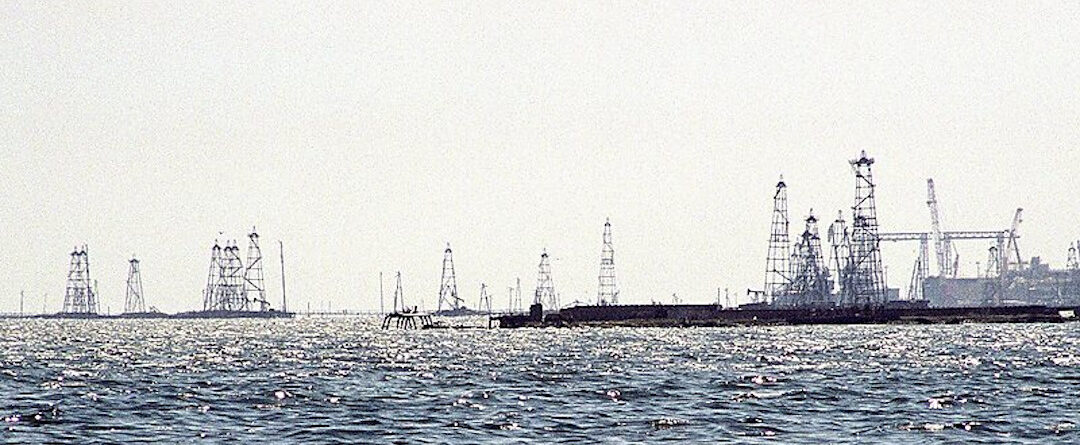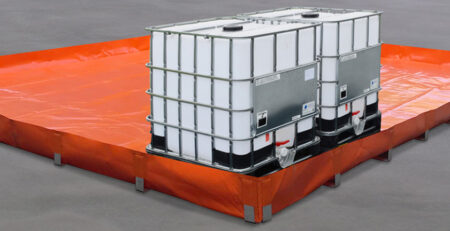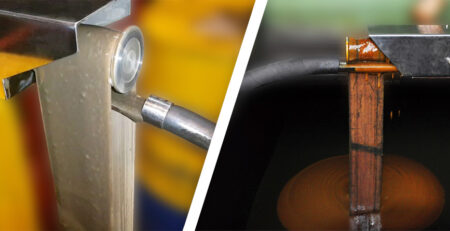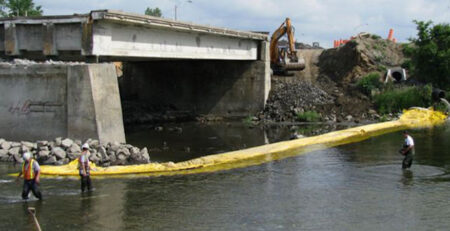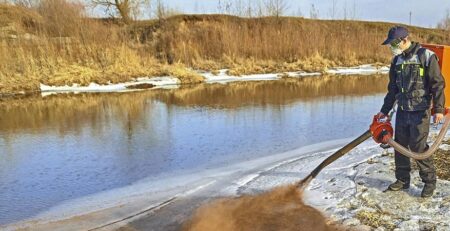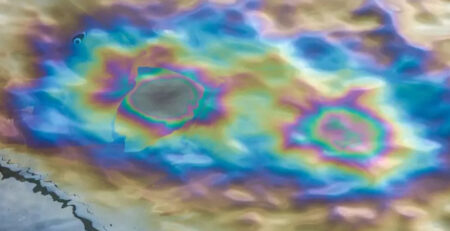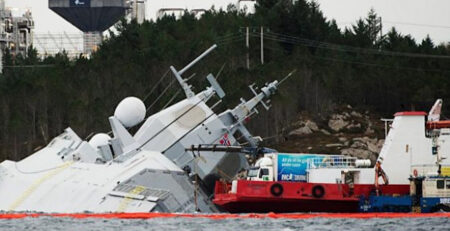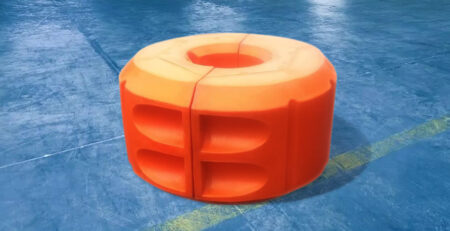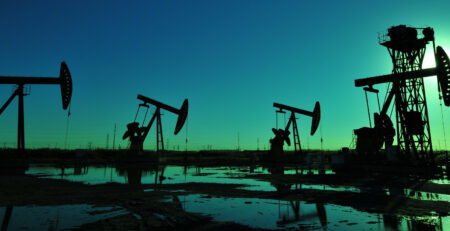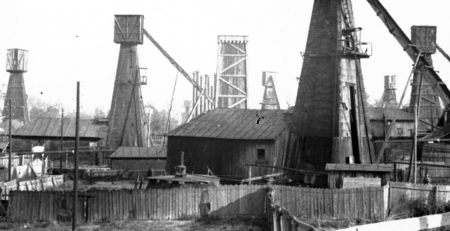Strategy for application of sorbents and biological preparations in Ukrainian ports to eliminate oil pollution of the sea
Using the advantages of its geographical position, Ukraine has dramatically increased the volume of maritime transport in recent years. At present, on the Black Sea coast, mainly in the northwestern Black Sea region, large multifunctional transshipment complexes with a developed coastal infrastructure have been created.
The ongoing intensive economic development of the Black Sea coast causes an increase in man-made pressures on coastal areas and sea areas.
The maritime complex of the Odessa region is developing especially intensively, the share of 7 ports of which (B. Dniester, Odessa, Reni, Ust-Danube, Yuzhny, Izmail) accounts for up to … ..% of all sea cargo in Ukraine, including % of liquid cargo, a significant part which is oil. The volume of oil transportation in this region will increase significantly due to the commissioning of the first stage of the oil terminal on the shore of the Maly Adzhalyksky (Grigorievsky) estuary, designed to transship 30-40 million tons of oil per year.
Almost all Black Sea ports are located in areas with significant biological resources and recreational potential, so their operation should be accompanied by a set of measures aimed at protecting and restoring natural resources.
Among the sources of anthropogenic pollution of the aquatic environment with oil products, about 30% are household and industrial wastes, 27% are ships and small fleets, and 12% are tanker and oil platform accidents.
The oil film disrupts the processes of evaporation and hydroexchange between the aquatic environment and the atmosphere, and emulsified oil products have a toxic and mutagenic effect on marine organisms.
Major accidents with extensive oil spills cause enormous damage to marine ecosystems and, in addition to the mass death of birds and hydrobionts, are accompanied by long-term environmental consequences, which can manifest itself in the form of a decrease in biological productivity, the appearance of anomalies in the development and the formation of tumors in marine animals.
Sources of pollution in port waters are mainly technological straits associated with bunkering of ships, delivery of bilge water and oil residues, and operations with oil on ships.
Potential pollution of port waters with oil products also includes coastal facilities of their infrastructure – oil storage facilities, steaming stations, railway and automobile routes, as well as storm drains. Oil spills can also occur in offshore anchorage areas, where spill response conditions are often more difficult than in limited port water areas. The area of an oil slick formed during a spill of 1 m3 of oil within 1 hour increases from 30,000 m2 to 92,000 m2 after a day.
Spreading over the surface of the sea, oil interacts with water and air, being exposed to a complex of physico-chemical processes that lead to a change in its properties and degradation. A significant danger to aquatic ecosystems and recreational areas is the polymerization of oil with the formation of so-called “resin balls”.
Along with evaporation of light fractions of oil, oil dissolves in water and passes into an emulsified state, forming two types of emulsions – oil in water (direct emulsion) and water in oil (reverse emulsion).
The most important condition for the elimination of emergency oil spills is the fastest possible implementation of OSR plans with the collection of most of the spilled oil product mechanically using oil scavengers (NMS). Depending on the terms and conditions, the total mass of oil products collected by oil and waste collectors ranges from 30 to 90% of the spilled volume.
To collect oil in shallow waters with depths of less than 2 meters, small-sized portable oil skimmers are used – skimmers.
The main technique to limit the spread of oil slicks and collect them is to limit contaminated water areas using various booms. Typically, such barriers consist of separate sections with a draft depth of 400 mm and rigid floats with a diameter of 300 mm.
One of the problems after the elimination of the main mass of oil pollution is the elimination of iridescent stripes and films and individual spots of oil products formed when the mass of spilled oil is from 0.1 to 0.4 g per 1 m2 of water surface.
To eliminate iridescent films, physicochemical and biological methods are used, which are based on the destruction of oil films by dispersion with the help of surfactants, sorption of film oil and partially water-oil emulsion by natural and synthetic sorbents, and biodegradation of hydrocarbons by specialized strains of microorganisms.
However, each of these methods has a number of disadvantages. Most dispersants are toxic and their use is restricted or even banned in some countries [7]. In the ports of Ukraine, dispersants are not used.
The rules for cleaning up contaminated water areas of ports provide for the use of sorbents, the standard stock of which must be in all ports [8]. Among the sorbents recommended by the rules are wastes from the woodworking industry and agriculture – husked corn cobs, straw, sawdust, and crushed peat. The use of these sorbents in ports has not found wide application due to the low oil intensity (in connection with this, it becomes necessary to use large volumes), their lack of hydrophobicity, the difficulty in creating and storing the necessary reserves, and the lack of mechanisms for their application.
Of the industrially produced sorbents, which have a high oil capacity and hydrophobicity, the most effective are sorbents made of polymers — from fine powders, granules, to mats, fabrics, and absorbent booms. The disadvantages of these drugs include the poor absorption of thin oil films, the carcinogenicity of fine powders (according to experts from the Mannesmann-Italy company), and the difficulty in disposal by burning [1]. There is no information on the use of such drugs in the ports of Ukraine.
From the point of view of low cost of raw materials and ecological cleanliness, sorbents based on organic natural substances – peat, sawdust, agricultural waste (bran, straw, rice husk, etc.) are the most attractive. The largest number of sorbents in this category are produced on the basis of peat: “Pit-sorb” (Canada), “Fin-sorb” (Great Britain), “Elkosorb” (Finland), “Mukat-4”, “Lesorb” (Belarus), “Sorboil ” (Russia). Of the oil sorbents developed in Ukraine, only Zhemchug, expanded perlite, is produced on an industrial scale.
All these sorbents have high oil capacity (from 4 to 10 g/g) and hydrophobicity. Their use for cleaning the sea surface provides a primary ecological effect – the rupture of continuous film pollution, the sorption of emulsified oils. The use of foreign preparations of this group in the ports of Ukraine is constrained, in our opinion, by their high cost for the Ukrainian consumer (8-12 US dollars per 1 kg).
A common disadvantage of the use of the above sorbents is the need to collect them, which is very laborious, requires special tools and is practically unfeasible with significant waves. The practice of oil spill responders using sorbents shows that in most cases it is not possible to collect more than 25% of the sorbent applied to the water surface. The moments complicating the use of sorbents include the lack of technology and equipment for their disposal by incineration.
Microbial destruction is one of the most important processes contributing to the elution of oil pollution from aquatic ecosystems. Microorganisms are able to use oil hydrocarbons in the process of energy and constructive metabolism and destroy them. The study of these processes and purposeful work on the selection of strains of microorganisms-destructors of oil hydrocarbons made it possible to develop a number of preparations based on them. Over the past 10 years alone, more than two dozen biological preparations based on oil-oxidizing microorganisms have been created in the CIS countries, while the proposed methods for stimulating natural self-cleaning processes have not gone beyond experimental treatments.
In Ukraine, the most famous drugs are: “Desna” – (development of the Ukrainian Research Center for Oil and Gas Ecology, Kiev), Consortium of Microorganisms – (Institute of High Technologies, Kiev), “Devoroil”, which is produced under the Russian license of OAO ” Enzyme”, (Ladyzhyn) and recently recommended by the Ministry of Ecology “Simbinal” (development of the Institute of Botany of the National Academy of Sciences of Ukraine). In Russia, “Putidoil”, “Oleovorin”, “Devoroil”, “Valentis”, “Naftoks”, “Mikromycet” are widely used, in Belarus – “Rodobel”, “Rodobel-T”. These preparations are lyophilized cultures or pastes, on the basis of which working solutions are prepared for the treatment of oil pollution. However, the use of such preparations is not rational in the conditions of the water areas of ports and the open sea due to the impossibility of creating the necessary effective concentrations of bacteria-destructors of oil hydrocarbons. In addition, the above bacterial preparations cannot be used to eliminate oil spills in the immediate response mode. The use of most of the above bacterial preparations at sea (a water body of the second category of water use in accordance with SanPiN 4630-88. 1.01.89) is doubtful for health reasons [9].
Reference List
- Абрамян О.А., Брюм А.И., Иванов В.Г. Главные морские порты: Одесса, Ильичевск, Южный. -Одесса : : Маяк, 1993-336с.
- Аренс В., Гридин О., Гридин А., Семь раз отмерь. Рекламные иллюзии и реальные перспективы применения нефтяных сорбентов.
- Герлах С.А. — Смит А. Загрязнение морей. Диагноз и терапия. Л.»Гидрометиздат». 1985 240с.
- Кожанова Г.А., Соловьев В.И., Гудзенко Т.В., Губанов В.В. Сорбенты и биопреператы для ликвидации нефтяного загрязнения моря / Экологические проблемы Чорного моря.- Одесса: ОЦНТИ, 2001. — С.287-293.
- Кожанова Г.А., Соловйов В.І., Гудзенко Т.В., Беляєва Т.О., Бобрєшова Н.С., Сьоміна Н.В. Метод ліквідації нафтового забруднення в акваторії портів із застосуванням нового біопрепарату «Еконадін». / Вісник Одеського національного університету. Біологія. -2001. -Том 6, випуск 2.- С.1154-157.
- Охрана окружающей среды на морском транспорте / Сборник научных статей, М. , В/О «Мортехинформреклама», 1990.
- Нельсон — СмитА. Загрязнение моря нефтью. Л .»Гидрометиздат». 1973 124с.
- Правила ведения работ по очистке загрязненных акваторий портов РД 31.04.01-90. М.:»Мортехинформреклама» 1991 50с.
- Соловьев В.И., Губанов В.В., Кожанова Г.А., Гудзенко Т.В., Семина Н.В. Применение сорбирующих бонов для ликвидации и профилактики нефтяного загрязнения / Экологические проблемы Черного моря.- Одесса: ОЦНТЭИ, 2002, — С. 203-205.
- Стратегічний План Дій щодо відтворення та захисту Чорного моря. 1996 21с.
- Цыкало А.Л., Писаревский И.А. Компьютерное моделирование распространения нефти в море при ее разливах и утечках / Экологические проблемы Черного моря.- Одесса: ОЦНТЭИ, 1999. — С. 169-173.
- Шувалов А.Р., Цыкало А.Л. Черное море: Правовые вопросы безопасности перевозок опасных грузов по интермодальным коридорам / Экологические проблемы Черного моря.- Одесса: ОЦНТ+ЭИ, 1999. — С.32-35.

